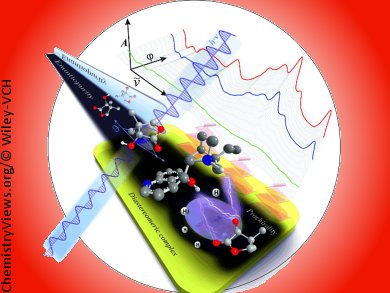Luminescent ionic transition-metal complexes and their use in light-emitting electrochemical cells are the topic of this week’s Review by N. Armaroli et al.: How can such complexes be synthesized and what are their electronic, photophysical, and photochemical properties? In a Minireview, A. Rutkowska and C. Schultz discuss methods and reagents for the visualization and induction of dynamic protein–protein interactions in living cells. The Highlights deal with catalysis by dinuclear gold complexes (A. Gómez-Suárez and S. P. Nolan), artificial adaptor proteins (C. Meyer and M. Köhn), and switchable catalysts (U. Lüning).
In the Communications section, A. Baiker et al. report evidence for an O-H-O interaction between the substrate and modifier of a platinum-catalyzed asymmetric hydrogenation (see picture). T. Katsuki et al. succeeded in an asymmetric epoxidation of conjugated olefins with air. A. I. Boldyrev et al. predict inorganic double-helix structures of simple lithium–phosphorus compounds. Y. Zhao et al. present mesoporous silica nanoparticles whose drug-delivery properties can be controlled by light and temperature.
And finally, C. Griesinger et al. debate whether residual dipolar couplings and other anisotropic NMR observables can be used to determine absolute configuration.


